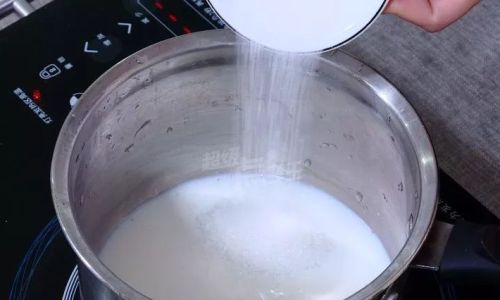Table of content
Milk, a dietary staple across cultures, requires meticulous handling to preserve its nutritional value, taste, and safety. Among the critical factors influencing milk quality, temperature reigns supreme. The way milk is stored—specifically the temperature at which it is maintained—directly impacts its shelf life, bacterial growth, and overall integrity. This article delves into the scientific principles governing milk storage, explores the optimal temperatures for different milk types, and provides actionable insights for consumers and industries alike.
The Composition of Milk and Temperature Sensitivity
Milk is a complex biological fluid composed of water, proteins, fats, lactose, vitamins, and minerals. Its delicate balance makes it highly perishable. Proteins like casein and whey, lipids in the form of triglycerides, and enzymes such as lactase are all susceptible to temperature fluctuations. When milk is exposed to elevated temperatures, its proteins may denature, leading to curdling or separation. Fats can oxidize, causing off-flavors, while lactose may undergo chemical changes that accelerate spoilage.
At refrigeration temperatures, these reactions slow dramatically, extending milk’s usability. However, freezing milk is a double-edged sword: while it halts bacterial growth, it disrupts fat globules and proteins, often resulting in a grainy texture upon thawing. Thus, the challenge lies in finding the sweet spot—cold enough to inhibit microbes but not so cold that structural damage occurs.
Recommended Temperatures for Different Milk Types
The ideal storage temperature varies depending on whether the milk is pasteurized, raw, ultra-high-temperature (UHT) processed, or frozen.

Pasteurized Milk
Pasteurization involves heating milk to eliminate pathogens like Salmonella and E. coli. However, this process does not render milk sterile; residual spoilage organisms remain. To maximize shelf life, pasteurized milk should be stored at or below 40°F (4°C). This temperature inhibits the proliferation of psychrotrophic bacteria, which thrive in cooler environments but grow slowly enough to delay spoilage. Studies indicate that milk stored at 39°F (3.9°C) can last up to 14 days past its “sell-by” date, while temperatures above 45°F (7°C) may reduce this window by half.
Raw Milk
Raw milk, unprocessed and rich in beneficial bacteria, demands stricter temperature control. The U.S. Food and Drug Administration (FDA) recommends storing raw milk at 38°F (3.3°C) or lower to suppress pathogenic bacteria like Listeria monocytogenes and Campylobacter. Even slight deviations can compromise safety, as raw milk lacks the protective measures of pasteurization.
UHT Milk
Ultra-high-temperature processing sterilizes milk by heating it to 280°F (138°C) for a few seconds. This renders it shelf-stable for months without refrigeration. However, once opened, UHT milk must be treated like pasteurized milk and stored below 40°F (4°C) to prevent contamination.
Frozen Milk
Freezing milk is a viable short-term solution, but it should be thawed in a refrigerator and consumed within 72 hours. The optimal freezing temperature is 0°F (-18°C) or lower. However, repeated freezing and thawing exacerbate texture issues, making this method suitable only for emergency storage.

Factors Influencing Milk Storage Efficiency
Temperature is not the sole determinant of milk quality. Environmental and procedural factors play pivotal roles.
Container Material
Glass containers are ideal for refrigerated milk, as they are inert and prevent light exposure, which can degrade riboflavin (vitamin B2) and other light-sensitive nutrients. Plastic containers, while convenient, may leach chemicals over time and offer less UV protection. For UHT milk, aseptic cartons lined with aluminum foil provide superior barrier properties.
Refrigerator Design
Modern refrigerators maintain temperatures between 34°F (1°C) and 40°F (4°C), but door compartments often fluctuate due to frequent opening. Milk should be stored on central shelves, where temperatures are most stable. Chest freezers maintain colder, more consistent temperatures than upright models, making them preferable for long-term freezing.
Exposure to Air and Contaminants
Oxidation accelerates when milk is exposed to air. Tightly sealed containers minimize this risk. Similarly, using clean utensils to pour milk prevents cross-contamination with bacteria from hands or surfaces.

The Danger Zone: Bacterial Proliferation
Between 40°F (4°C) and 140°F (60°C), bacteria multiply rapidly—a range dubbed the “danger zone.” At these temperatures, pathogens like Staphylococcus aureus and Bacillus cereus can double in number every 20 minutes. A single drop in refrigerator temperature to 45°F (7°C) can cut milk’s shelf life by 40%, as demonstrated in microbial growth studies.
Spoilage vs. Pathogenic Risks
Not all bacteria render milk unsafe; many merely cause spoilage. Pseudomonas species, for example, produce enzymes that break down fats and proteins, leading to sour or fruity odors. Lactobacillus and Leuconostoc bacteria ferment lactose into lactic acid, causing curdling. While these changes are unpleasant, they are not always harmful. However, pathogens like E. coli O157:H7 and Salmonella can cause severe illness, underscoring the need for strict temperature control.
Practical Tips for Consumers
- Set Refrigerator to 37–40°F (3–4°C): Use a thermometer to verify accuracy, as built-in dial settings are often unreliable.
- Avoid the Door: Store milk on shelves, where temperatures are most stable.
- Check “Use-By” Dates: Even at optimal temperatures, milk degrades over time. Prioritize older containers first.
- Freeze Strategically: Pour milk into airtight, freezer-safe containers, leaving 1 inch (2.5 cm) of headspace for expansion.
- Avoid Overstocking: Cold air must circulate freely to maintain even temperatures.
Industrial Perspectives: From Farm to Table
Dairies and retailers face unique challenges in maintaining milk quality. Large-scale refrigeration systems, insulated tankers, and rapid cooling processes are essential to prevent bacterial growth during transit. For example, milk harvested at 98.6°F (37°C) must be cooled to 40°F (4°C) within four hours to meet safety standards. Advanced technologies like phase-change materials (PCMs) and IoT-enabled temperature sensors are revolutionizing supply chains, ensuring compliance even in remote regions.
The Role of Enzymes and Additives
Enzymatic activity also influences milk storage. Lipase, an enzyme that breaks down fats, remains active even at low temperatures, contributing to rancidity. Some producers add stabilizers like carrageenan or heat-treat milk to inactivate enzymes. However, these practices can affect taste and nutritional profiles, sparking debates among clean-label advocates.

Cultural and Regional Variations
In tropical climates, where ambient temperatures often exceed 90°F (32°C), maintaining refrigeration is critical. Innovations like solar-powered refrigerators and clay pot coolers (zeer pots) offer sustainable solutions for rural communities. Conversely, in Scandinavian countries, milk is often stored in unheated pantries during winter, leveraging natural cold temperatures to extend shelf life.
Future Directions: Smart Storage Solutions
The rise of smart refrigerators with built-in cameras, temperature alerts, and expiration trackers is transforming milk storage. These devices notify users when temperatures deviate, milk is nearing its expiration date, or the door is ajar. Coupled with blockchain technology for supply chain transparency, such innovations promise to reduce waste and enhance safety.
Conclusion
The quest for the perfect milk storage temperature is a balancing act between science and practicality. While 40°F (4°C) remains the gold standard for pasteurized milk, factors like container type, refrigerator design, and handling practices are equally vital. By understanding the interplay of these elements, consumers and industries can ensure that milk remains a safe, nutritious, and delicious part of the global diet. As technology advances, the future of milk storage looks brighter—and colder—than ever.






0 comments